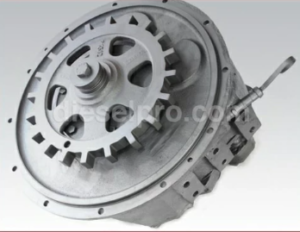
Proper maintenance is essential for ensuring the longevity, efficiency, and safe operation of the Twin Disc MG506 Marine Gear. As a critical component in marine propulsion systems, this transmission requires consistent attention to avoid unexpected breakdowns, minimize wear, and maximize performance. This guide provides a comprehensive approach to maintaining the MG506, covering regular schedules, fluid management, component inspections, troubleshooting, and long-term storage practices.
Parts Catalog for Twin Disc MG506 Marine Transmissions
Rebuilt Twin Disc MG506 Marine Transmissions
Bearings For Twin Disc MG506 Marine Transmissions
Plate Kit For Twin Disc MG506 Marine Transmission
Gasket Kits For Twin Disc MG506 Marine Transmission
Regular Maintenance Schedule
Establishing and adhering to a routine maintenance schedule is the foundation of proper care for the Twin Disc MG506. Routine inspections and services help detect and resolve minor issues before they develop into major problems.
Daily Maintenance (Pre-Operation Checks)
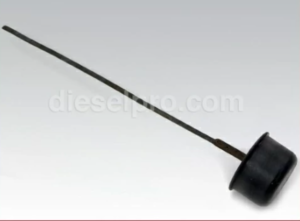
Perform these checks before starting the engine each day to ensure the MG506 is ready for operation:
- Fluid Level Check:
- Inspect the transmission fluid level using the dipstick or sight gauge. The fluid should be at the manufacturer’s recommended level.
- Look for signs of contamination such as cloudiness, burnt smell, or debris.
- Visual Inspection for Leaks:
- Check the area beneath the transmission for signs of fluid leaks.
- Inspect all hoses, seals, and connections for dripping or pooling fluid.
- Check for Unusual Noises or Vibrations:
- Listen for any abnormal sounds during idle, which could indicate internal issues.
- Listen for any abnormal sounds during idle, which could indicate internal issues.
- Inspect Mounting Bolts and Connections:
- Ensure all mounting bolts and brackets are secure.
- Ensure all mounting bolts and brackets are secure.
Weekly Maintenance
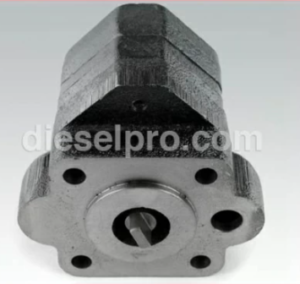
Weekly checks focus on ensuring fluid quality and the general condition of the system.
- Inspect Transmission Fluid Quality:
- Look for discoloration or contamination that may indicate overheating or internal wear.
- Top off fluid if necessary.
- Examine External Components:
- Check for signs of corrosion or wear on external surfaces.
- Ensure that cooling systems (if applicable) are free from obstructions.
- Inspect Control Linkages:
- Confirm that shifting mechanisms are smooth and responsive.
- Apply lubricant to prevent seizing.
Monthly Maintenance
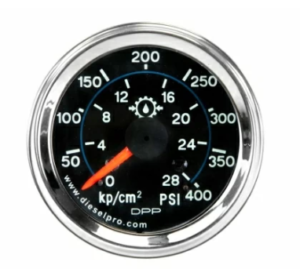
More in-depth inspections should be performed monthly, especially for vessels used frequently or under heavy load.
- Check Fluid Pressure and Temperature:
- Use gauges to ensure that pressure and temperature are within the manufacturer’s specifications.
- Look for fluctuations that could indicate blockages or issues with the cooling system.
- Inspect Mounting and Alignment:
- Verify that the transmission remains properly aligned with the engine and propeller shaft.
- Look for any signs of misalignment such as vibrations or unusual noises.
- Clean External Components:
- Remove any debris, dirt, or salt residue that could cause corrosion.
- Remove any debris, dirt, or salt residue that could cause corrosion.
Quarterly Maintenance
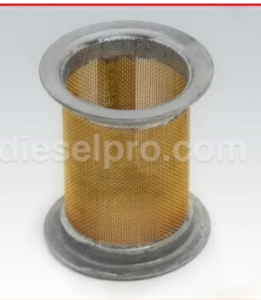
Quarterly maintenance includes more thorough inspections and adjustments.
- Drain and Replace Fluid:
- Completely drain the transmission fluid and replace it with fresh, manufacturer-approved fluid.
- Completely drain the transmission fluid and replace it with fresh, manufacturer-approved fluid.
- Replace Filters (if applicable):
- Change any external filters to ensure clean fluid circulation.
- Change any external filters to ensure clean fluid circulation.
- Inspect Internal Components:
- If possible, inspect internal gears, clutches, and bearings for wear.
- If possible, inspect internal gears, clutches, and bearings for wear.
- Tighten All Fasteners:
- Check and tighten all bolts, nuts, and fasteners to prevent loosening due to vibrations.
- Check and tighten all bolts, nuts, and fasteners to prevent loosening due to vibrations.
Annual Maintenance
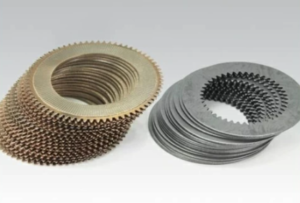
Annual maintenance should be comprehensive and may involve professional servicing.
- Full Fluid System Flush:
- Conduct a complete flush of the fluid system to remove accumulated sludge or contaminants.
- Conduct a complete flush of the fluid system to remove accumulated sludge or contaminants.
- Inspect and Replace Seals:
- Replace seals and gaskets that show signs of wear or leakage.
- Replace seals and gaskets that show signs of wear or leakage.
- Inspect Clutches and Gears:
- Conduct a detailed inspection of clutches, gears, and other critical components. Replace parts showing significant wear.
- Conduct a detailed inspection of clutches, gears, and other critical components. Replace parts showing significant wear.
- Check Alignment:
- Perform a full alignment check and adjust as necessary to maintain optimal operation.
- Perform a full alignment check and adjust as necessary to maintain optimal operation.
Lubrication and Fluid Change Intervals
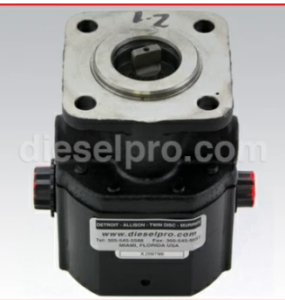
The fluid in the MG506 serves multiple purposes—lubrication, cooling, and hydraulic engagement. Proper fluid management is essential for smooth operation.
Recommended Fluid Type
- Fluid Type: Use a high-quality, marine-grade hydraulic transmission fluid.
- Viscosity Grade: SAE 30 or 40, depending on temperature and engine type.
- API Classification: CF or higher.
Fluid Change Intervals
- Initial Change: After the first 50–100 hours of operation to remove contaminants from the break-in process.
- Routine Change: Every 250–300 hours of operation or at least every 6 months.
- Heavy-Duty Applications: Change fluids every 150–200 hours if operating under heavy loads or extreme conditions.
How to Perform a Fluid Change
- Warm the Transmission: Run the engine for a few minutes to warm the fluid. This reduces viscosity and aids in a complete drain.
- Shut Down the Engine: Turn off the engine and allow the transmission to cool slightly.
- Drain the Fluid:
- Remove the drain plug and allow fluid to drain completely into a suitable container.
- Inspect the drained fluid for debris or discoloration, which could indicate internal wear.
- Replace the Filter:
- If applicable, replace the filter during the fluid change.
- If applicable, replace the filter during the fluid change.
- Refill with New Fluid:
- Add new, manufacturer-approved fluid slowly to avoid air pockets.
- Check fluid level using the dipstick and adjust as needed.
- Inspect for Leaks:
- Run the engine briefly to circulate fluid and check for any leaks.
- Run the engine briefly to circulate fluid and check for any leaks.
Inspection of Key Components (Filters, Seals, Clutches)
Routine inspection of the MG506’s key components helps ensure reliability and identify potential issues early.
1. Filters

- Inspection Frequency: Check the filter with every fluid change.
- Signs of Failure: Reduced fluid pressure, contamination in the fluid, or blockage.
- Replacement Guidelines: Replace filters every 6 months or during scheduled fluid changes.
2. Seals
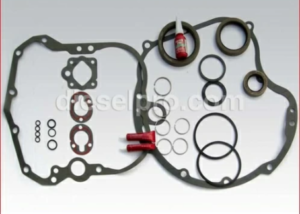
- Inspection Frequency: Monthly visual inspection.
- Signs of Wear: Oil leaks, cracks, or visible wear.
- Replacement Guidelines: Replace seals annually or if leakage is detected.
3. Clutches

- Inspection Frequency: During annual maintenance or if slippage occurs.
- Signs of Wear: Difficulty shifting, slippage under load, or abnormal noises.
- Replacement Guidelines: Replace if clutches are worn beyond tolerances or show signs of burning.
Troubleshooting Common Issues (Noise, Vibration, Slippage)
Recognizing and addressing common issues promptly can prevent severe damage and costly repairs.
1. Noise
- Cause: Misalignment, worn bearings, or insufficient lubrication.
- Solution:
- Inspect and correct alignment.
- Check fluid levels and add fluid if necessary.
- Replace worn components.
2. Vibration
- Cause: Shaft misalignment, loose mounting bolts, or worn dampening mounts.
- Solution:
- Realign the engine and transmission.
- Tighten all bolts to specified torque levels.
- Replace worn mounts.
3. Slippage
- Cause: Low fluid levels, worn clutches, or incorrect shifting techniques.
- Solution:
- Top off fluid and inspect for leaks.
- Replace worn clutches.
- Ensure shifting is performed at idle speed.
How to Address Minor Leaks or Adjustments
1. Minor Leaks
- Inspect Seals and Connections: Identify the source of the leak.
- Tighten Connections: Use the proper torque specifications.
- Replace Seals if Necessary: Use high-quality, marine-grade replacements.
2. Adjustments
- Clutch Adjustment: Adjust the clutch engagement mechanism if slipping occurs.
- Alignment Adjustment: Recheck and adjust alignment during routine inspections.
- Pressure Adjustment: Verify hydraulic pressure levels and adjust if necessary.
Long-Term Storage Guidelines
Proper storage of the MG506 is essential for preventing corrosion and degradation during inactivity.
1. Drain Fluid
- Remove all transmission fluid to prevent condensation and internal corrosion.
2. Clean and Dry Components
- Clean the exterior and interior components thoroughly.
- Allow all components to dry before storage.
3. Apply Protective Coatings
- Use corrosion inhibitors on exposed metal surfaces.
- Apply oil to internal components to prevent rusting.
4. Seal the System
- Close all openings with protective covers or plugs to prevent moisture ingress.
5. Store in a Controlled Environment
- Store the transmission in a dry, climate-controlled area.
- Avoid exposure to direct sunlight, moisture, or extreme temperatures.
By adhering to this detailed maintenance guide, operators can ensure that the Twin Disc MG506 Marine Gear continues to operate efficiently and reliably throughout its service life. Regular inspections, fluid management, and careful monitoring will prevent major issues, reduce downtime, and extend the overall lifespan of the transmission.
Troubleshooting and Diagnostics for Twin Disc MG506 Marine Gear
The Twin Disc MG506 Marine Gear is renowned for its durability and reliable performance. However, like any complex mechanical system, it is susceptible to wear, operational issues, and unexpected failures over time. Proper troubleshooting and diagnostic practices are essential for maintaining optimal performance, minimizing downtime, and extending the lifespan of the transmission. This comprehensive guide explores the most common problems associated with the MG506, how to identify and diagnose them, and corrective actions to restore the transmission to full working order.
Identifying Common Problems with Twin Disc MG506 Marine Gear
Early identification of potential issues with the MG506 Marine Gear is crucial for avoiding severe mechanical damage and costly repairs. Understanding the signs and symptoms of common problems ensures timely and effective intervention.
1. Unusual Noises
Unusual noises are often the first indicator of a problem within the transmission system. The type of noise and its frequency can help diagnose the underlying issue.
- Grinding Noises:
- May indicate worn or damaged gears, misalignment, or inadequate lubrication.
- Grinding sounds during shifting suggest potential damage to the clutch system or synchronizers.
- Knocking or Clunking Noises:
- Often caused by loose or worn mounting bolts, misalignment, or issues with the drive coupling.
- Often caused by loose or worn mounting bolts, misalignment, or issues with the drive coupling.
- Whining Sounds:
- Can indicate low fluid levels, worn bearings, or internal wear.
- Can indicate low fluid levels, worn bearings, or internal wear.
2. Vibration Issues
Excessive or irregular vibrations can suggest misalignment, imbalanced shafts, or worn dampening mounts.
- Consistent Vibration:
- May point to propeller shaft misalignment or loose mounting bolts.
- May point to propeller shaft misalignment or loose mounting bolts.
- Intermittent Vibration:
- Could indicate issues with the clutch or uneven gear wear.
- Could indicate issues with the clutch or uneven gear wear.
3. Fluid Leaks
Fluid leaks are a critical concern as they compromise lubrication and cooling, leading to component wear or failure.
- Visible Leaks:
- Look for puddles or fluid stains beneath the transmission.
- Inspect seals, hoses, and drain plugs for signs of seepage.
- Slow Leaks:
- May not be immediately visible but will result in low fluid levels over time.
- Monitor fluid levels regularly to detect gradual losses.
4. Gear Slippage
If the transmission slips out of gear or fails to engage fully, it can indicate several underlying issues.
- Low Fluid Levels:
- Insufficient fluid reduces hydraulic pressure, leading to slippage.
- Insufficient fluid reduces hydraulic pressure, leading to slippage.
- Worn Clutches:
- Damaged or worn clutches cannot maintain proper engagement.
- Damaged or worn clutches cannot maintain proper engagement.
- Improper Shifting Technique:
- Shifting at high RPMs can cause incomplete gear engagement.
- Shifting at high RPMs can cause incomplete gear engagement.
5. Difficulty in Shifting
Hard or delayed shifting can reduce operational efficiency and indicate mechanical issues.
- Misaligned Linkage:
- May restrict smooth gear changes.
- May restrict smooth gear changes.
- Worn or Damaged Synchronizers:
- Synchronizers that are worn down can cause resistance during shifting.
- Synchronizers that are worn down can cause resistance during shifting.
6. Overheating
Excessive heat is a serious concern that can lead to internal damage or fluid degradation.
- Low Fluid Levels:
- Reduces cooling efficiency, leading to heat build-up.
- Reduces cooling efficiency, leading to heat build-up.
- Blocked Cooling System:
- Obstructions in the oil cooler or lines can prevent proper fluid circulation.
- Obstructions in the oil cooler or lines can prevent proper fluid circulation.
Step-by-Step Diagnostic Procedures
Diagnosing issues with the MG506 requires a systematic approach to identify the root cause accurately. Follow these diagnostic steps to isolate and resolve problems efficiently.
Step 1: Conduct a Visual Inspection
Begin with a thorough visual inspection to identify obvious issues.
- Check for Fluid Leaks:
- Inspect around seals, drain plugs, and fluid lines. Look for staining, puddles, or wet spots.
- Inspect around seals, drain plugs, and fluid lines. Look for staining, puddles, or wet spots.
- Inspect Mounting Points:
- Ensure all bolts and fasteners are tight and secure. Loose fittings can lead to vibration and misalignment.
- Ensure all bolts and fasteners are tight and secure. Loose fittings can lead to vibration and misalignment.
- Check External Components:
- Look for wear on external parts, including couplings, hoses, and dampening mounts.
- Look for wear on external parts, including couplings, hoses, and dampening mounts.
Step 2: Verify Fluid Levels and Quality
Fluid issues are a common cause of transmission problems.
- Check Fluid Level:
- Use the dipstick or sight glass to verify the fluid level.
- Use the dipstick or sight glass to verify the fluid level.
- Inspect Fluid Quality:
- Examine the color and consistency. Fluid should be clear and free from debris.
- A burnt smell or discoloration indicates overheating or contamination.
Step 3: Test Operating Conditions
Perform a controlled test to assess how the transmission responds under normal conditions.
- Monitor Shifting Performance:
- Shift through Forward, Neutral, and Reverse, listening for abnormal noises and ensuring smooth engagement.
- Shift through Forward, Neutral, and Reverse, listening for abnormal noises and ensuring smooth engagement.
- Observe Fluid Pressure and Temperature:
- Ensure both remain within manufacturer specifications.
- Ensure both remain within manufacturer specifications.
- Watch for Vibrations:
- Any irregular or excessive vibrations should be investigated immediately.
- Any irregular or excessive vibrations should be investigated immediately.
Step 4: Check Mechanical Alignment
Misalignment can lead to vibration, noise, and component damage.
- Use a Dial Indicator:
- Check shaft runout to ensure proper alignment between the engine and transmission.
- Check shaft runout to ensure proper alignment between the engine and transmission.
- Inspect Propeller Shaft:
- Look for signs of wear, imbalance, or misalignment.
- Look for signs of wear, imbalance, or misalignment.
Step 5: Review Error Codes (if applicable)
For transmissions with electronic control systems:
- Connect Diagnostic Tools:
- Retrieve any error codes from the electronic control module.
- Retrieve any error codes from the electronic control module.
- Interpret Error Codes:
- Consult the service manual for specific troubleshooting steps related to each code.
- Consult the service manual for specific troubleshooting steps related to each code.
Corrective Actions for Common Failures
Once the issue has been identified, take the following corrective actions to restore the MG506’s performance.
1. Resolving Fluid Leaks
- Identify the Source:
- Inspect seals, hoses, and drain plugs.
- Inspect seals, hoses, and drain plugs.
- Tighten or Replace Components:
- Replace worn seals or tighten fittings.
- Apply thread sealant to leaking plugs.
2. Addressing Vibration Issues
- Check Alignment:
- Re-align the engine, transmission, and propeller shaft using precision alignment tools.
- Re-align the engine, transmission, and propeller shaft using precision alignment tools.
- Replace Worn Dampening Mounts:
- Install new vibration dampeners if the existing ones show wear or damage.
- Install new vibration dampeners if the existing ones show wear or damage.
3. Correcting Gear Slippage
- Top Off Fluid Levels:
- Ensure fluid is at the manufacturer’s recommended level.
- Ensure fluid is at the manufacturer’s recommended level.
- Replace Worn Clutches:
- Disassemble and inspect the clutch assembly, replacing components as needed.
- Disassemble and inspect the clutch assembly, replacing components as needed.
4. Fixing Difficult Shifting
- Inspect Control Linkage:
- Adjust or replace the linkage if misalignment or wear is detected.
- Adjust or replace the linkage if misalignment or wear is detected.
- Check Synchronizers:
- Replace worn or damaged synchronizers to restore smooth shifting.
- Replace worn or damaged synchronizers to restore smooth shifting.
5. Managing Overheating Issues
- Clean the Oil Cooler:
- Remove blockages and ensure unrestricted fluid flow.
- Remove blockages and ensure unrestricted fluid flow.
- Flush the Fluid System:
- Replace contaminated or degraded fluid.
- Inspect for debris buildup and clean components thoroughly.
When to Seek Professional Assistance
While many common issues can be resolved with proper troubleshooting, some situations require professional intervention.
1. Persistent Noise or Vibration
- If noise or vibration persists after addressing alignment and mounting, internal component wear or damage may be present.
- Professional technicians can perform deeper inspections and repairs.
2. Major Fluid Loss
- If fluid loss occurs rapidly and cannot be traced to seals or hoses, internal damage such as cracked housings may be present.
3. Recurring Gear Slippage
- If clutch replacement or fluid adjustments do not resolve slippage, the transmission may need professional rebuilding.
4. Overheating Despite Repairs
- Overheating that continues after replacing fluid or cleaning the cooling system may indicate internal blockage or pump failure.
- Seek professional diagnostics to identify complex issues.
5. Complex Electronic Issues
- If error codes persist and basic troubleshooting doesn’t resolve the problem, professional diagnostics may be required.
Conclusion
Proper troubleshooting and diagnostic procedures are essential for maintaining the performance and longevity of the Twin Disc MG506 Marine Gear. By understanding how to identify common issues, conducting systematic diagnostics, and applying appropriate corrective actions, operators can minimize downtime and reduce repair costs.
However, recognizing when to seek professional assistance is equally important. Severe internal damage, complex electronic failures, or recurring operational issues require expert intervention to avoid further damage. With proactive maintenance and careful troubleshooting, the MG506 will deliver reliable performance for years to come.

Rebuilt Twin Disc MG506 Marine Transmissions
Bearings For Twin Disc MG506 Marine Transmissions
Plate Kit For Twin Disc MG506 Marine Transmission
Gasket Kits For Twin Disc MG506 Marine Transmission
Videos About Twin Disc Transmissions
6 Reasons Your Twin Disc Transmission Has Low Oil Pressure
7 Reasons Your Twin Disc Transmission Is Overheating
3 Reasons Your Clutch Plates in Your Twin Disc Transmission Are Making Excessive Noise
Bull Gear On A Twin Disc Transmission
Rebuilt Twin Disc Transmissions



 Free US Calls: 1-888-433-4735
Free US Calls: 1-888-433-4735 International: 305-545-5588
International: 305-545-5588